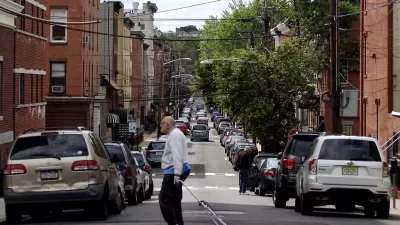Pete Swabey tells the tale of the development of smart city technology by IBM and Cisco, which has now reached a point of maturation in which significant lessons, economic opportunities, and future applications can be discerned.
In only seven years since its initial seed investment, by the Clinton Foundation, smart city technology – "the use of networks, sensors and analytics to make cities more efficient, productive and habitable" - has begun to affect the ways in which cities operate, evidenced by a profile piece by Natasha Singer, in the The New York Times, on Rio's citywide system (developed by IBM) integrating data from some 30 agencies.
While Swabey recounts the larger strategies guiding the tech giants in their quest to corner the expected $57 billion global market to supply cities with "smart" systems by 2014, Singer focuses narrowly on the Rio initiative, IBM's pioneer project and world's most fully integrated smart city application.
Rio's challenges (poverty, sprawl, crime) and opportunities (host to the 2014 World Cup and 2016 Olympics), provides a unique crucible in which to develop and test such technology. Singer describes the system's foundation in IBM's incorporation of hardware, software, analytics and research, and the development of a virtual operations interface. Singer also looks at the system's performance in responding to recent crises such as a 20-story office building collapse.
The Integrated Operations Centre software that IBM developed for the Rio project is now a commercially available product and Zhenjiang, a city of about three million people in eastern China, has already bought the new system to manage public transportation, reports Singer.
FULL STORY: IBM, Cisco and the business of smart cities

Alabama: Trump Terminates Settlements for Black Communities Harmed By Raw Sewage
Trump deemed the landmark civil rights agreement “illegal DEI and environmental justice policy.”

Planetizen Federal Action Tracker
A weekly monitor of how Trump’s orders and actions are impacting planners and planning in America.

The 120 Year Old Tiny Home Villages That Sheltered San Francisco’s Earthquake Refugees
More than a century ago, San Francisco mobilized to house thousands of residents displaced by the 1906 earthquake. Could their strategy offer a model for the present?

In Both Crashes and Crime, Public Transportation is Far Safer than Driving
Contrary to popular assumptions, public transportation has far lower crash and crime rates than automobile travel. For safer communities, improve and encourage transit travel.

Report: Zoning Reforms Should Complement Nashville’s Ambitious Transit Plan
Without reform, restrictive zoning codes will limit the impact of the city’s planned transit expansion and could exclude some of the residents who depend on transit the most.

Judge Orders Release of Frozen IRA, IIJA Funding
The decision is a victory for environmental groups who charged that freezing funds for critical infrastructure and disaster response programs caused “real and irreparable harm” to communities.
Urban Design for Planners 1: Software Tools
This six-course series explores essential urban design concepts using open source software and equips planners with the tools they need to participate fully in the urban design process.
Planning for Universal Design
Learn the tools for implementing Universal Design in planning regulations.
Clanton & Associates, Inc.
Jessamine County Fiscal Court
Institute for Housing and Urban Development Studies (IHS)
City of Grandview
Harvard GSD Executive Education
Toledo-Lucas County Plan Commissions
Salt Lake City
NYU Wagner Graduate School of Public Service




























